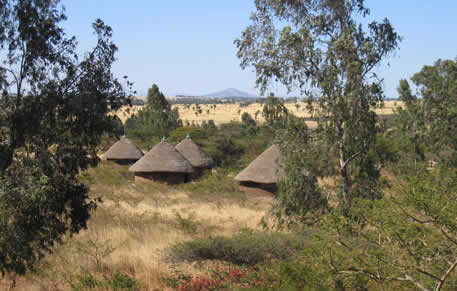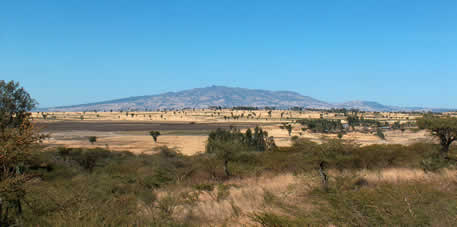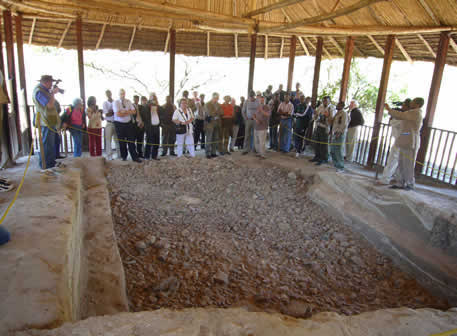- | Home
- | Melka Kunture
- | History of Research
- | Museum
- | For Scientists
- | Bibliography
- | Culture 2000 |
The Melka Kunture Museum
The new Museum of Melka Kunture represents the final realization of an idea dating to the very beginning of the activities of the French Archaeological Mission which could never be accomplished for different reasons.

The museum
However a small Museum was built inside the camp and represented a valid solution for Ethiopian and foreign tourists. During the years, one of the major aim of both the French and the Italian Archaeological Missions was to provide this important prehistoric site of a Museum capable to explain to visitors the meaning of Melka Kunture and its place in the African Prehistory, as well as to present not only prehistoric tools and bones but also some in situ excavations.

The landscape

The Melka Kunture museum area
In its actual organization the Museum consists of four structures built in local style, close to the archaeological camp, and linked by a small path to two excavated Acheulean sites dating to about 800,000 years ago (the so called Open Air Museum), a few hundreds of meters far from the four tukuls.
Both the Museum and the Open Air Museum are located in the savannah environment dominated by the acacias and still well preserved in the protected area of Melka Kunture. Together with the Awash River, this environment strongly evokes what was the prehistoric habitat where Pleistocene hominids lived during Lower and Middle Pleistocene times.

The Open Air Museum